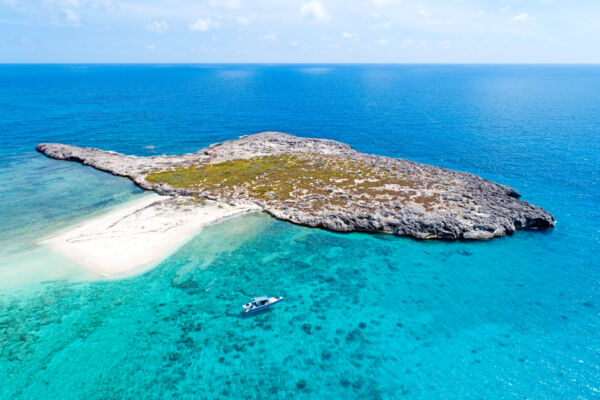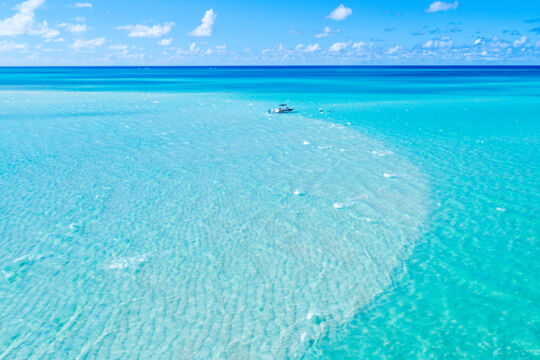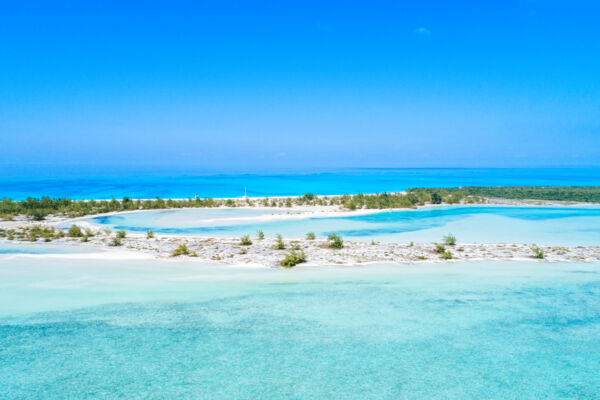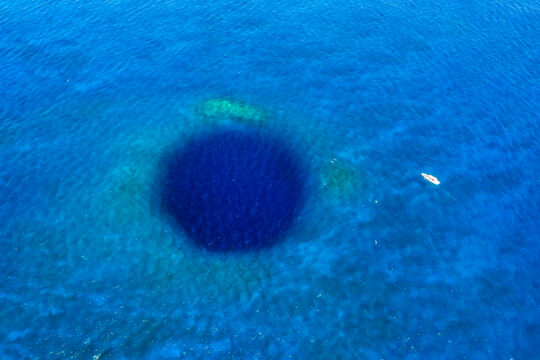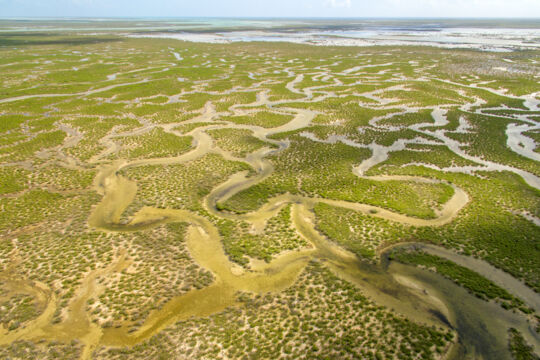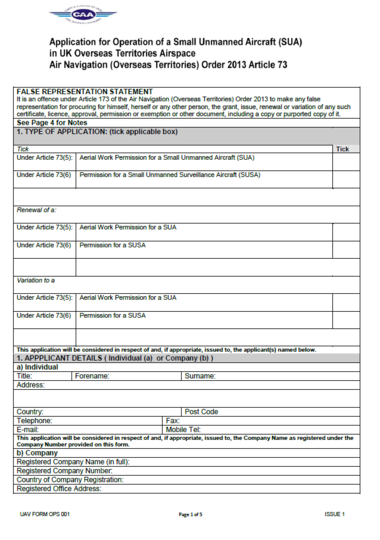Flying Drones in the Turks and Caicos
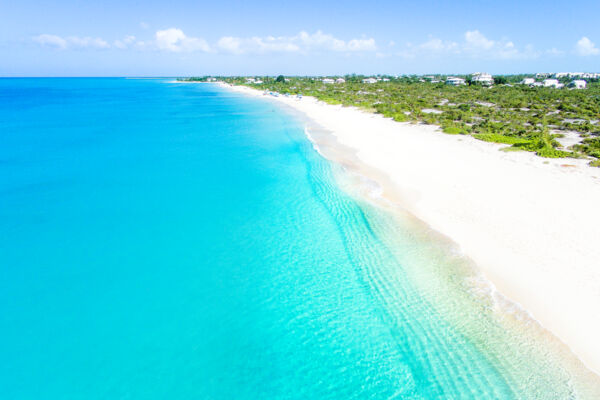
Drone use has become increasingly popular in the Turks and Caicos since the mid-2010s. There’s simply no better way to capture the vibrant turquoise hues of the ocean, spectacular beaches, and some of the country's best Instagram spots than from the air.
Do I need a permit?
A permit is not necessary for recreational drone use in the Turks and Caicos Islands. However, you must follow the guidelines below. Commercial use of drones requires a permit from the Turks and Caicos Civil Aviation Authority (see the section at the end for more details and the application process).
Bringing Drones on Airplanes
Some airlines have restrictions on bringing drones on board. This is primarily due to the fire risk the batteries pose (as they are typically lithium-based batteries).
For example, JetBlue doesn’t allow batteries with a capacity higher than 160 Wh, and passengers are limited to two spare batteries. These spares must be in clear, plastic bags with the terminal ends taped.
If you’ll be bringing a drone on your vacation to the Turks and Caicos, it’s advised to check with your airline if there are any applicable restrictions.
Drone Photography Services
If you’re looking to book a local drone photographer for a photo shoot, there are several options available in the Turks and Caicos. Some businesses specialize in outdoor and lifestyle drone shoots, often involving the ocean and clear kayaks.
A number of professional commercial photographers provide drone work for real estate and other marketing purposes.
For more information on booking a photographer, see Turks and Caicos Photographers.
Drone use in the Turks and Caicos is subject to the following guidelines issued by the Royal Turks and Caicos Islands Police Force:
- You must keep a distance of 160 feet (50 m) from people.
- You must keep a distance of 500 feet (150 m) from crowds of 1,000 or more, and you cannot fly over crowds.
- You must fly your drone within your line of sight.
- Do not attempt to fly your drone over airports or in areas where aircraft are operating.
- Do not fly higher than 400 feet (120 m).
- Respect others' privacy when flying your drone.
Failure to adhere to guidelines may result in enforcement action by the police.
DJI Drones and Restrictions
Drones manufactured by DJI have varying levels of built-in restrictions around local airports and approach/departure paths for aircraft. These include both authorization restrictions (requires an unlock code/account) and altitude restrictions.
It’s important to note that the restrictions from DJI are more relaxed than the guidelines issued by the police.
The main issue to be aware of is that flying within about a three-mile (5 km) radius of airports in the Turks and Caicos requires DJI authorization. As all of our islands are relatively small, this means that many areas where you may wish to fly a drone fall within this authorization zone. Islands such as Salt Cay are entirely within the DJI Fly Safe authorization zone, along with most of Grand Turk and South Caicos.
It’s recommended to obtain authorization whilst at your accommodation (or before disembarking a cruise ship), as internet access, whether via public Wi-Fi or cellular, isn’t always available where you’ll be flying.
DJI Location Restrictions by Island
Providenciales
Flight is prohibited near the Providenciales Airport, Downtown, and parts of Kew Town.
Fly Safe authorization is required to fly near Chalk Sound (including Taylor Bay and Sapodilla Bay), Kew Town, Five Cays, Blue Hills, parts of Venetian Road, and parts of Turtle Tail.
Areas near Chalk Sound and some parts of Long Bay have altitude restrictions.
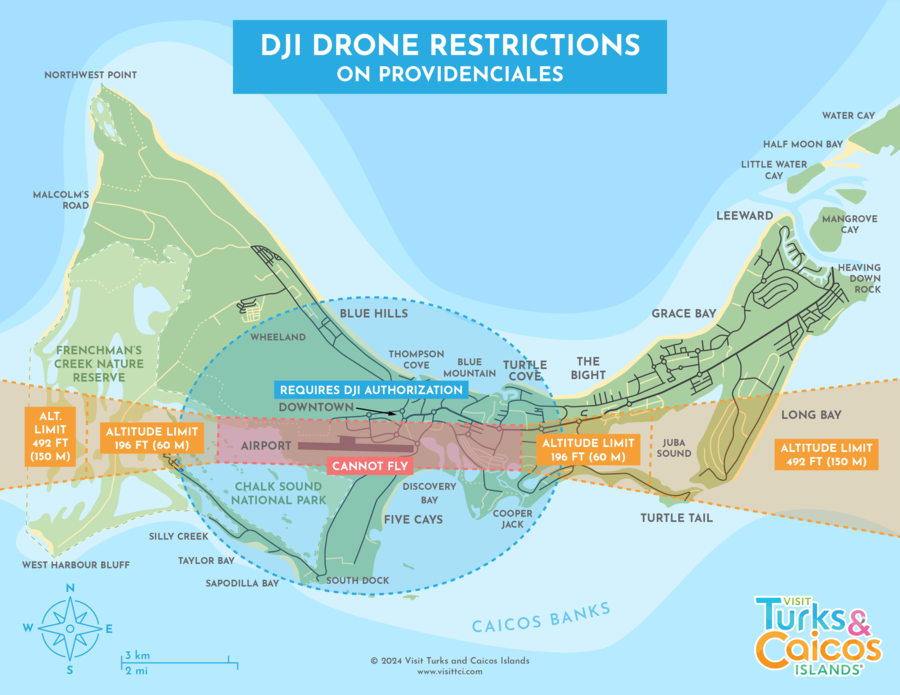
Grand Turk
Flight is prohibited near the Grand Turk Airport and English Point.
Almost the entirety of the island, with the exception of the area near the lighthouse, requires Fly Safe Authorization.
For cruise guests, it’s recommended to obtain your unlock code before disembarking, as internet access can be difficult to find on the island.
Salt Cay
Flight is prohibited near the Salt Cay Airport, Balfour Town, North District, Northeast Point, and most of North Bay Beach.
The remainder of the island requires Fly Safe authorization (due to Salt Cay’s small size, all of the island is in vicinity of the airport).
North Caicos
Flight is prohibited near the North Caicos Airport and most parts of Major Hill.
Flight near Horsestable Beach and Bottle Creek requires Fly Safe authorization.
Middle Caicos
There are no prohibited locations on Middle Caicos, as the Middle Caicos Airport is not in operation. However, there is a Fly Safe authorization zone surrounding the disused airport. This zone covers the village of Conch Bar and Mudjin Harbour, and includes the attractions of Indian Cave, Conch Bar Caves, and the Caicos Pine Yard Trail.
South Caicos
Flight is prohibited near the South Caicos Airport and Valley Bay Beach.
Nearly all of the island requires Fly Safe authorization, with the exception of the Plandon Cay Cut area (the northern peninsular of the island).
Pine Cay
There are no prohibited areas on Pine Cay, but flight near the Pine Cay Airport requires Fly Safe authorization.
Other Areas: Parrot Cay, Ambergris Cay, Water Cay
There are no DJI flight restrictions on these cays. For navigating the Turks and Caicos Islands as a whole, you can use DJI’s interactive map feature.
Commercial Drone Usage in the Turks and Caicos
Commercial usage of a drone requires a permit from the Turks and Caicos Civil Aviation Authority. The application form below has details on where to submit the form (via email) to obtain a permit.

